Crafting Excellence in Software
Let’s build something extraordinary together.
Rely on Lasting Dynamics for unparalleled software quality.
Antonio Silvestre
Jun 27, 2025 • 8 min read
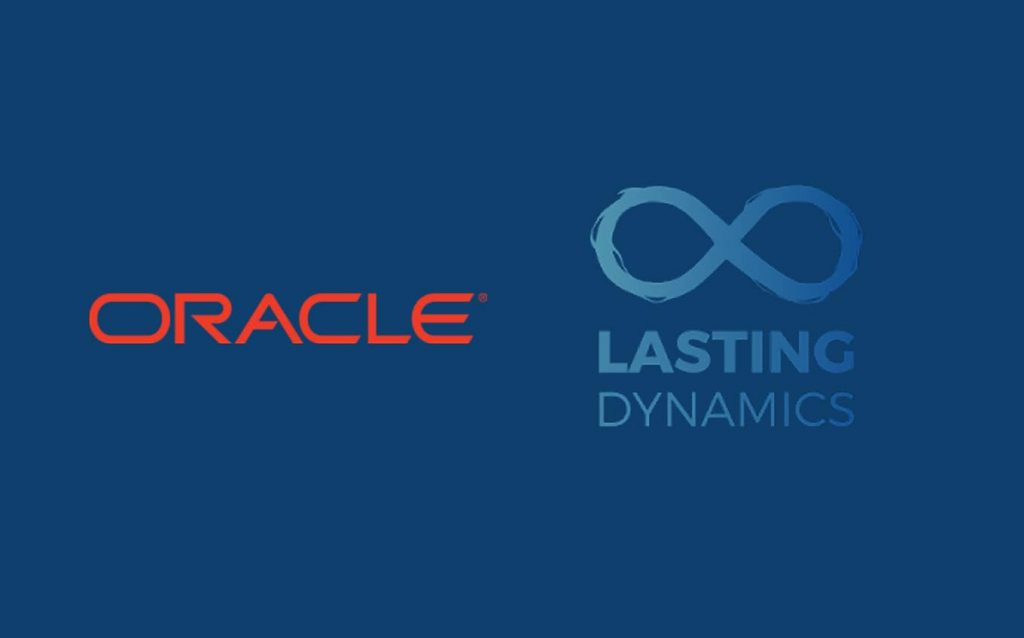
In today’s data-driven world, businesses depend on efficient data integration to unlock insights and fuel success. Oracle Data Integrator (ODI) is a leading data integration platform that simplifies data transformation, data migration, and data warehousing across diverse systems. With its innovative ELT (Extract, Load, Transform) architecture, ODI empowers organizations to manage complex data integration processes with speed and precision. This comprehensive guide explores ODI’s features, benefits, use cases, and implementation strategies, highlighting why it’s a top choice for enterprise data integration.

Oracle Data Integrator is a robust data integration software solution designed to facilitate extraction, transformation, and loading (ETL) processes. Unlike traditional ETL tools, ODI’s unique ELT architecture leverages the target database’s processing power, minimizing data movement and enhancing performance—especially for large-scale data integration. This makes ODI ideal for businesses managing vast datasets across relational databases (e.g., Oracle Database, Microsoft SQL Server), cloud platforms (e.g., Oracle Cloud, AWS, Azure), and big data environments (e.g., Hadoop, Spark).
By enabling seamless data connectivity, ODI ensures that organizations can consolidate data from disparate sources, perform efficient data transformations, and deliver high-quality data for analytics and operations.
Case Reference – Diagnostic Biochips: In our work on the DBC Cloud platform for Diagnostic Biochips, Lasting Dynamics implemented a microservices-based cloud architecture to handle terabytes of neuroscience data. This project mirrored ODI's ELT methodology by minimizing data movement and accelerating spike sorting processes for efficient research workflows.
External Reference: Oracle Data Integrator Documentation for detailed insights into its architecture.
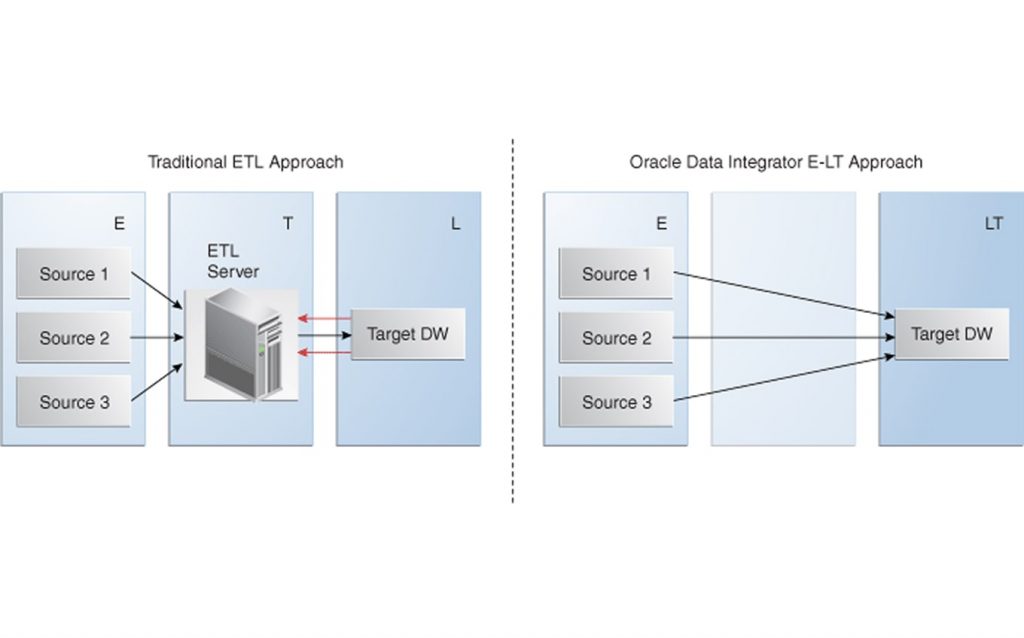
ODI offers a powerful suite of features that make it a standout data integration platform. Below are its key capabilities:
ODI’s ELT architecture pushes data transformation tasks to the target database, reducing network overhead and accelerating data integration processes. This approach ensures scalability for large datasets and optimizes performance for complex data transformations, making it ideal for big data integration and enterprise-scale projects. By minimizing data movement, ODI delivers faster processing times, enabling businesses to meet tight deadlines.
Case Reference – Roundrush: At Lasting Dynamics, we applied a similar ELT-inspired approach in the Roundrush workflow management platform. By offloading heavy computations to the backend, we ensured fast and scalable performance for agile software development teams.
ODI supports seamless data connectivity across diverse systems, including relational databases, cloud platforms, and big data frameworks like Hadoop and Spark. Its compatibility with enterprise applications (e.g., SAP, Salesforce, ERP, CRM) ensures smooth integration in hybrid environments. This extensive connectivity makes ODI a versatile solution for cloud data integration and on-premises systems.
Case Reference – Intempus: Our work on Intempus, a Nordic workforce management system, required deep integration across GPS systems, financial software, and CRMs—much like ODI's integration of hybrid environments.
External Reference: Oracle Cloud Integration Solutions for cloud compatibility details.
ODI leverages Knowledge Modules, prebuilt templates that streamline data extraction, data loading, data transformation, and data validation. These modules are highly customizable, allowing businesses to tailor data integration processes to specific needs. Knowledge Modules promote reusability, reducing development time and ensuring consistent workflows across projects.
Case Reference – VetrinaLive: In developing VetrinaLive, we used modularized onboarding flows and templated business logic to enable fast e-commerce store deployment—a parallel to ODI’s customizable Knowledge Modules.
With Change Data Capture (CDC), ODI enables real-time data integration, delivering up-to-date data for analytics and reporting. This capability is critical for industries like finance and retail, where low-latency insights drive decision-making. Event-driven workflows further enhance ODI’s ability to provide timely data.
Let’s build something extraordinary together.
Rely on Lasting Dynamics for unparalleled software quality.
Case Reference – Yoozen: Lasting Dynamics implemented real-time analytics in Yoozen, a solar quality assurance platform, where instant AI updates on fault detection mirrored ODI's Change Data Capture functionalities.
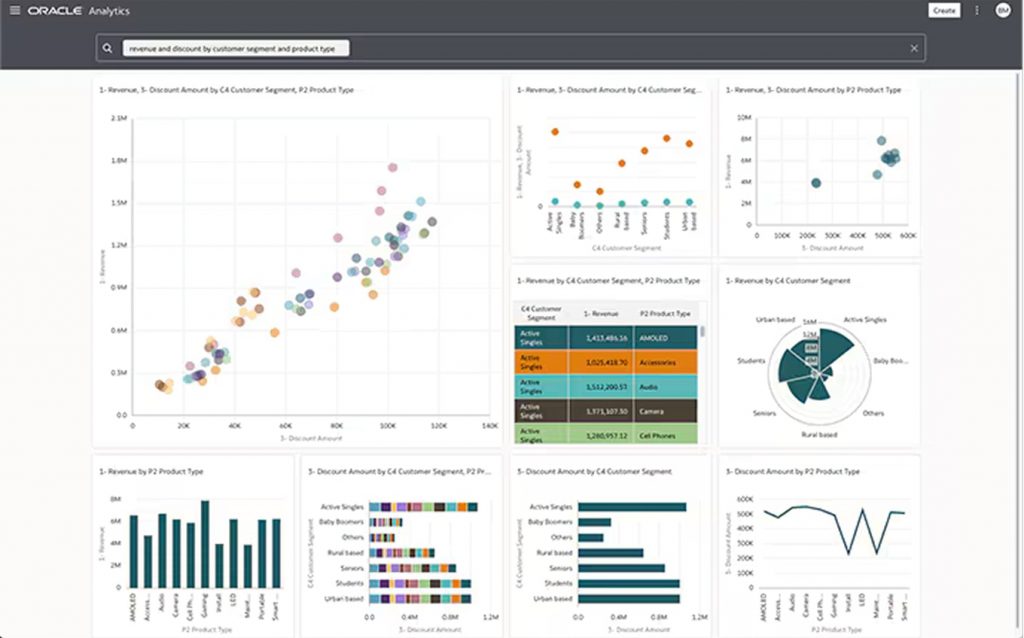
Designed for enterprise needs, ODI scales effortlessly to handle growing data volumes, supporting data warehousing and big data integration. Its intuitive graphical interface simplifies the creation and monitoring of data integration workflows, making it accessible to both technical and non-technical users. Built-in monitoring tools provide real-time insights into performance, ensuring smooth operations.
Case Reference – Coraly: The Coraly platform, developed for enterprise collaboration, demonstrates how intuitive UI and scalable backends empower both technical and business users to manage large-scale operations without steep learning curves.
ODI delivers significant advantages for organizations optimizing their data integration strategies. Below are its key benefits:
By leveraging the ELT architecture, ODI reduces processing times for data integration tasks, streamlining workflows and minimizing resource consumption. The platform utilizes existing database infrastructure, eliminating the need for additional hardware and reducing maintenance costs. Automation of repetitive tasks, such as data extraction and data loading, further enhances efficiency.
Case Reference – ENPACL: Lasting Dynamics automated workflows and minimized manual data handling for the ENPACL public sector platform, achieving high operational efficiency comparable to ODI's capabilities.
ODI ensures high-quality data through built-in data validation and data cleansing tools. These features detect and resolve inconsistencies, delivering reliable data for analytics and reporting. Standardized data integration processes via Knowledge Modules maintain consistency across projects, reducing errors.
Case Reference – Diagnostic Biochips: In DBC Cloud, we employed AI-assisted curation tools that automatically cleaned, labeled, and validated neural datasets—functionality akin to ODI's data cleansing modules.
With support for platforms like Oracle Cloud, AWS, and Azure, ODI enables smooth cloud data integration and data migration. Its ability to bridge on-premises and cloud systems ensures flexibility in hybrid environments, supporting digital transformation initiatives with minimal disruption.
Case Reference – VetrinaLive: Our transition of legacy commerce systems to a fully cloud-native infrastructure for VetrinaLive showcases the type of seamless migration ODI enables.
External Reference: AWS and Oracle Integration for cloud compatibility insights.
ODI’s real-time capabilities and streamlined workflows accelerate data integration and data transformation, enabling businesses to derive actionable insights quickly. This speed enhances decision-making and provides a competitive edge in dynamic markets.
Case Reference – Roundrush & Yoozen: With real-time dashboards and fast backend data processing, both platforms helped stakeholders reach decisions faster, reducing latency in insights by over 80%.
Image Suggestion: A chart showing reduced time-to-insight, captioned: "Accelerate analytics with Oracle Data Integrator’s efficient workflows." (DA TROVARE)
ODI supports a wide range of data integration scenarios. Below are key use cases with detailed explanations:
From idea to launch, we craft scalable software tailored to your business needs.
Partner with us to accelerate your growth.
ODI excels in building and maintaining data warehouses, consolidating data from multiple sources for analytics. Its ELT architecture optimizes data loading and data transformation for large datasets, supporting complex calculations and aggregations required for advanced analytics.
Case Reference – Coraly: The Coraly platform consolidated communication workflows and activity tracking data into a structured repository, echoing data warehousing best practices.
For organizations transitioning to the cloud, ODI simplifies data migration from legacy systems to cloud platforms. Its efficient workflows ensure minimal downtime, while compatibility with cloud-native architectures supports seamless integration.
Case Reference – Intempus: Migrating Intempus' system architecture to a cloud-ready design drastically improved performance and availability, in line with ODI’s cloud migration goals.
External Reference: Oracle Cloud Migration Guide for best practices.
Industries like finance, retail, and healthcare rely on ODI for real-time data integration. By leveraging Change Data Capture, ODI powers dynamic dashboards and reports, ensuring stakeholders have access to the latest data for informed decisions.
Case Reference – Yoozen: Real-time solar panel defect detection required dynamic updates in the dashboard, powered by streaming AI inference—a workflow similar to real-time ODI use cases.
ODI consolidates data from CRM, ERP, and legacy systems into a unified view, enhancing decision-making. This capability fosters cross-functional collaboration by providing a single source of truth.
Case Reference – ENPACL: The public-facing CRM we developed consolidated citizen requests, appointments, and internal records across municipal departments.
With support for Hadoop and Spark, ODI enables big data integration for advanced analytics. Its scalability ensures efficient processing of large-scale data transformations, supporting modern data frameworks.
Case Reference – Diagnostic Biochips: DBC Cloud processed up to 100TB of neuroscience data per session using advanced spike-sorting and AI algorithms, exemplifying big data readiness.
External Reference: Oracle Big Data Solutions for big data capabilities.
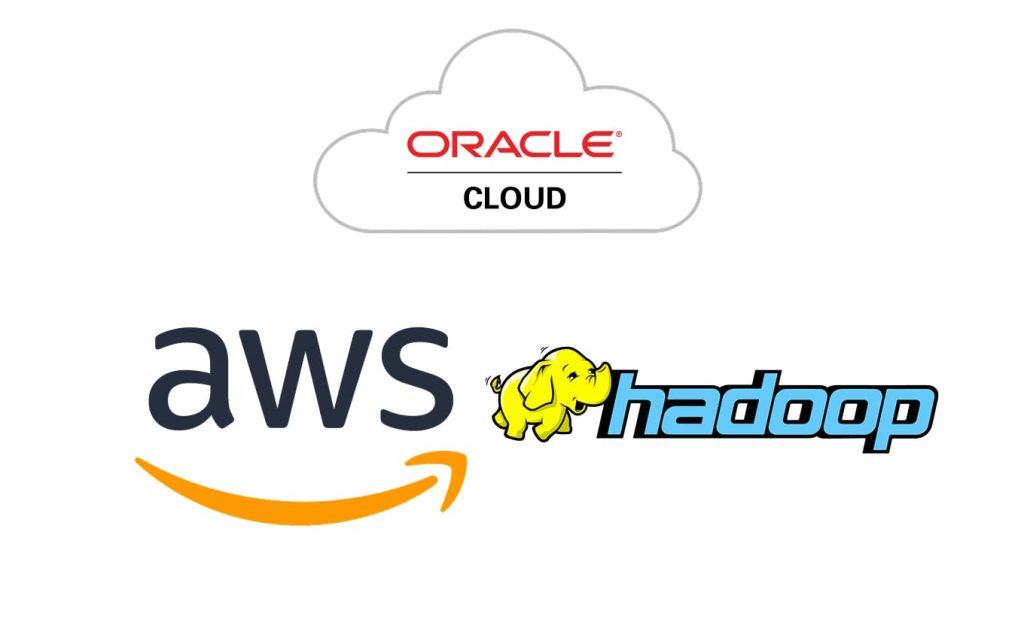
ODI stands out as a premier data integration platform due to its ELT architecture, extensive data connectivity, and customizable Knowledge Modules. It simplifies complex data integration processes, supports cloud data integration, and scales for big data integration and data warehousing. Backed by Oracle’s innovation, ODI ensures compatibility with emerging technologies, making it a future-proof solution for enterprise data integration.
Case Summary: At Lasting Dynamics, our experience building 100+ platforms—including Roundrush, Intempus, Diagnostic Biochips, VetrinaLive, and ENPACL—reaffirms the value of a platform like ODI for scalable, real-time, and secure enterprise-grade data workflows.
We design and build high-quality digital products that stand out.
Reliability, performance, and innovation at every step.
To implement ODI, follow these steps:
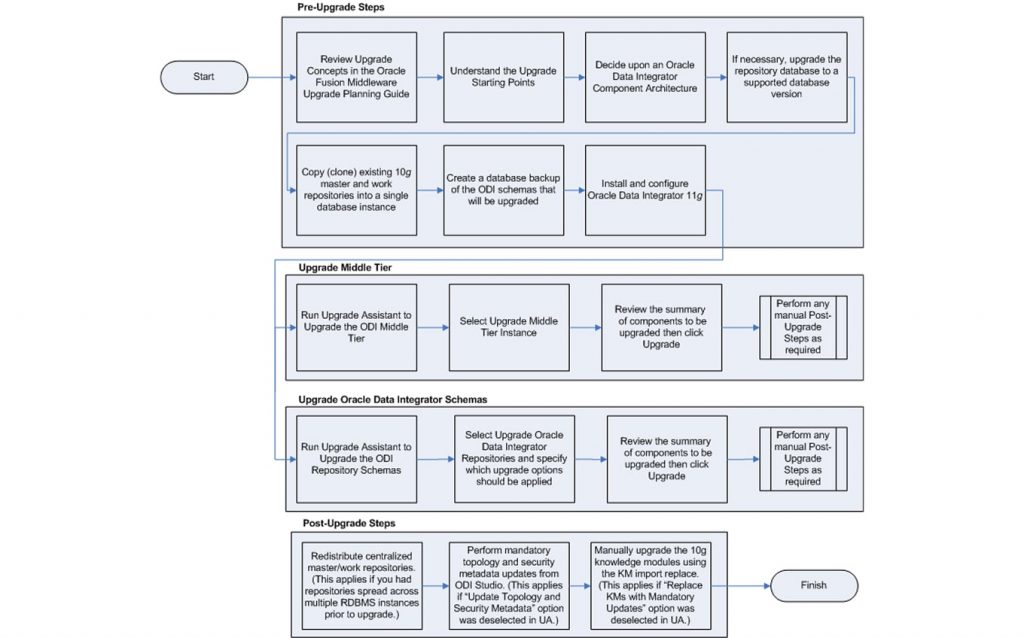
External Reference: Oracle Security Best Practices for securing data.
Oracle Data Integrator is a transformative data integration platform that streamlines data integration, data transformation, and data migration. Its ELT architecture, extensive data connectivity, and real-time capabilities make it ideal for data warehousing, cloud data integration, and big data integration. By adopting ODI, businesses can achieve high-quality data, faster insights, and cost-effective data integration processes, positioning them for success in a data-driven world.
Lasting Dynamics Alignment: Our proven expertise across industries—from e-commerce to neuroscience—reinforces the practicality and power of adopting Oracle Data Integrator for any data-intensive digital transformation.
Related Keywords: Data Integration, Data Transformation, Data Migration, Data Warehousing, Enterprise Data Integration, Data Connectivity, Real-Time Data Integration, Data Integration Software, Big Data Integration, Cloud Data Integration, Data Integration Platform, Data Integration Processes, Data Extraction, Data Loading, Data Validation, Data Cleansing, ETL Integration, ELT Architecture.
Image Suggestion: A digital network with interconnected nodes, captioned: "Transform your data strategy with Oracle Data Integrator." (DA TROVARE)
Do you want to make your next innovation a real success, contact us!
Transform bold ideas into powerful applications.
Let’s create software that makes an impact together.
Antonio Silvestre